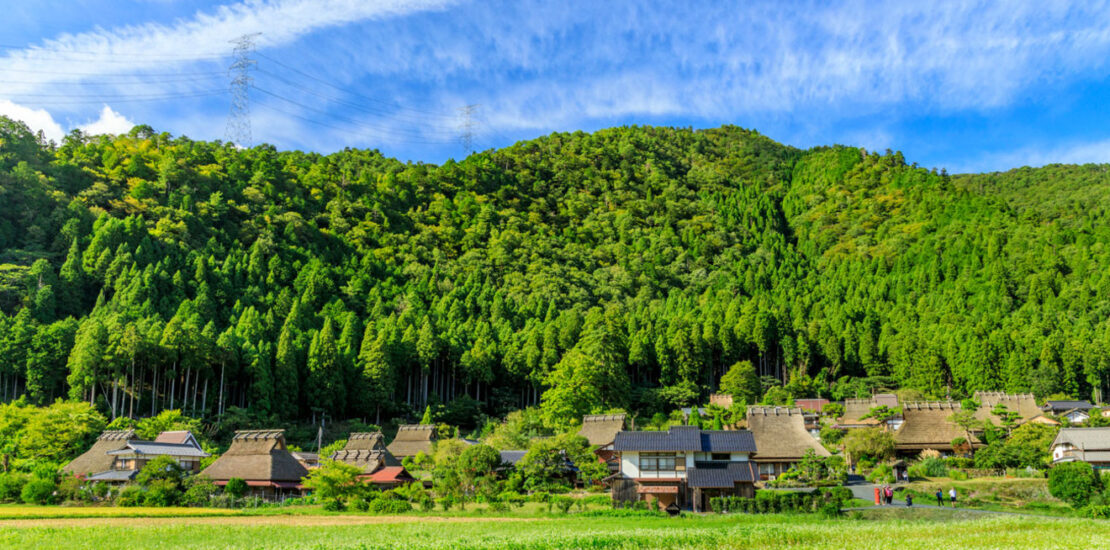The Japanese countryside seems like an idyllic place to live, but what’s it really like to live there long term?

Long walks in cool woods, beautiful stretches of mirror-like rice paddies, and clear starry skies at night: these all make the countryside seem like the perfect getaway. Especially now, when the idea of staying far away from other people is particularly attractive. But what is living in the Japanese countryside, or inaka, really like? Here are five facts that might surprise you!
1. No Washlets, Just Squat Toilets
Japan has a reputation for having some of the nicest toilets in the world. In major cities around Japan, most toilets are clean, and they usually come with a bidet function. More advanced washlets come with all the bells and whistles, including bathroom music, automatic lifting seats, and seat warmers in winter.
The countryside… does not always have these. Instead, you might find yourself with the infamous squat toilet. A toilet you literally squat over to use. These toilets are the polar opposite of those in the cities. While they take some getting used to, once you get the hang of squatting instead of sitting, it’s all fine. Just make sure your skirt doesn’t trail down and don’t keep your phone in your back pocket!
2. You Need a Car
Living in a major Japanese city, it’s easy to get used to public transportation. There is always a bus, train, tram, or other transportation to get you anywhere, any time (as long as it’s before midnight). However, in the countryside, there will likely be only one bus servicing an entire area. That bus will also only come every couple of hours. If you want to get somewhere, you must plan your day around the bus times.
Instead, most countryside folk in Japan own a car. Living in the countryside means more space, which means large driveways and lots of parking. You use your car to go everywhere, to work, to school, and even to supermarkets. Many families even have multiple cars, one for each adult.
3. You Can Get Paid to Live There
Since fewer and fewer people want to live in the countryside, some prefectures are paying people to move there. Mishima village, on the tiny island of Kagoshima, in Kyushu is making a special offer. If you move there, they’ll cover part of your moving expenses, pay you a monthly stipend for 3 years, give you reduced rent for a nice apartment, and give you a free cow!

Due to Covid-19, the Japanese government was also offering $9000 to people who were willing to move from Tokyo to the countryside while working remotely. Akita prefecture has also been promoting people to live there and experience rural life while working remotely.
There are also many very cheap or free houses available for purchase in the countryside. Hold up before you take the deal though. In remote areas, there is not a lot of work available to foreigners besides English teaching (unless you work remotely). And those free houses? A lot of them are fixer-uppers which require a lot of cash for maintenance. Plus, since they are old, many of them are not up to recent earthquake code. So unless you like rebuilding houses, it’s probably not the best idea to get one of these “free” homes.
4. Unattended Produce Stands
The level of local trust in the countryside is amazing. When out walking or driving, you will likely find small unattended stands with local seasonal produce. The prices are marked nearby, and a small coin box is placed somewhere obvious. You simply choose what you like, pay the marked price and leave. They trust people not to steal, which, for someone having lived in large cities, in far more dangerous countries than Japan, seems unthinkable.
5. You Will Stand Out
In the city as a foreigner, you still stand out, especially right now, when tourists aren’t allowed in. Even in Tokyo I’ve been approached by kids with questions and had cute grandmas come up to me and ask where I’m from. However, in the countryside, you will stand out far, far more. There are usually very few foreign tourists who visit and even fewer foreigners who live there. So expect lots of stares. All the scrutiny can get tiring, especially when you just want to get your groceries and go home.
6. There’s a Lot to Do
While there probably isn’t much going on in your local tiny town, Japan has a lot of internal tourism, which means every prefecture has lots and lots of tiny tourist attractions. If you search for a bit on Japanese Google, you’re bound to find dozens of random activities, restaurants, and museums a few hours away by car. While weekdays may be slow, on weekends you can road trip all over your prefecture to discover lots of unique areas. Random giant roadside dinosaurs, cute michi-no-eki (roadside stops), and lovely natural landscapes all await. When I was living in Gifu we went to see a new place every weekend for months… and I still haven’t finished seeing all the sights!



